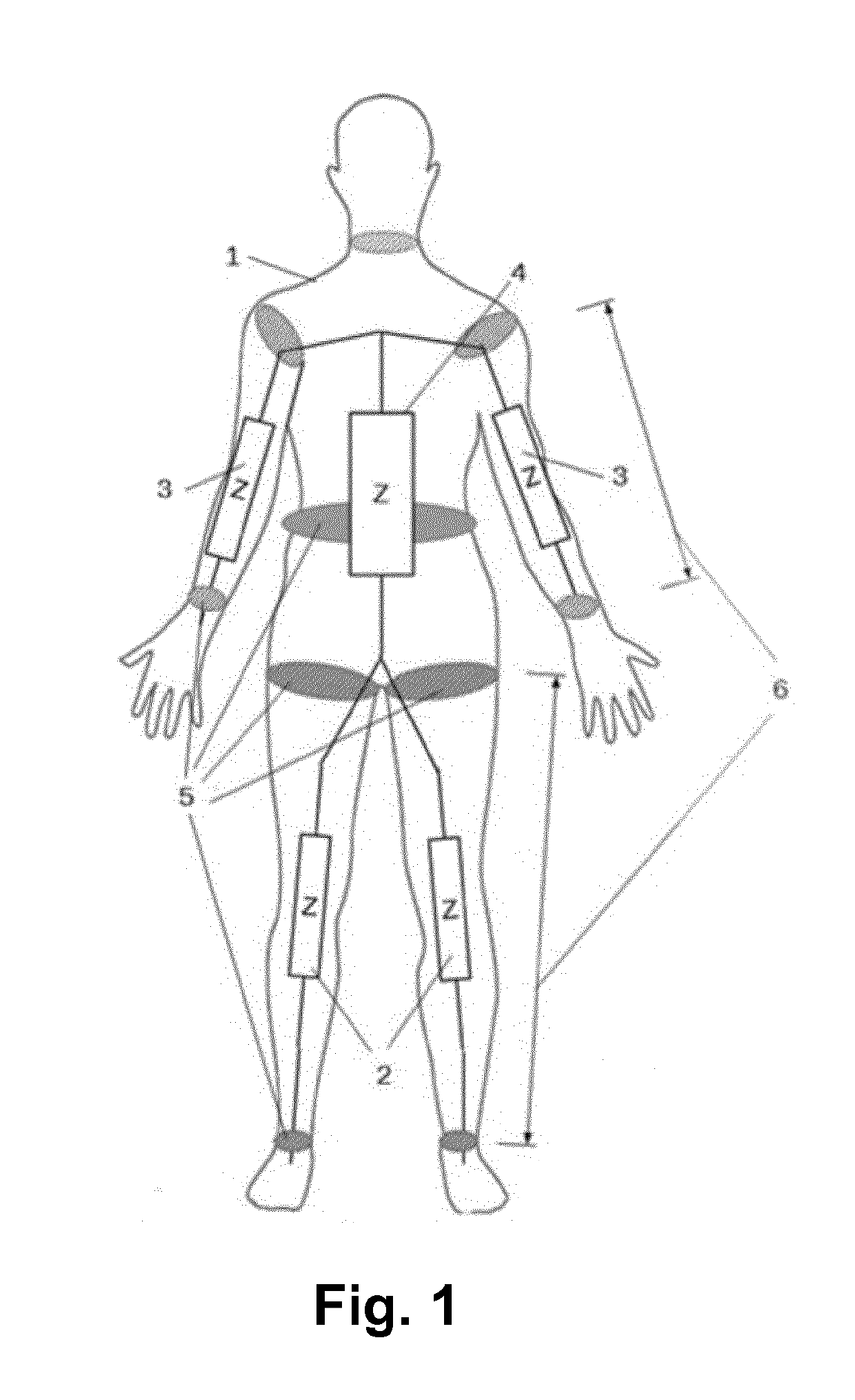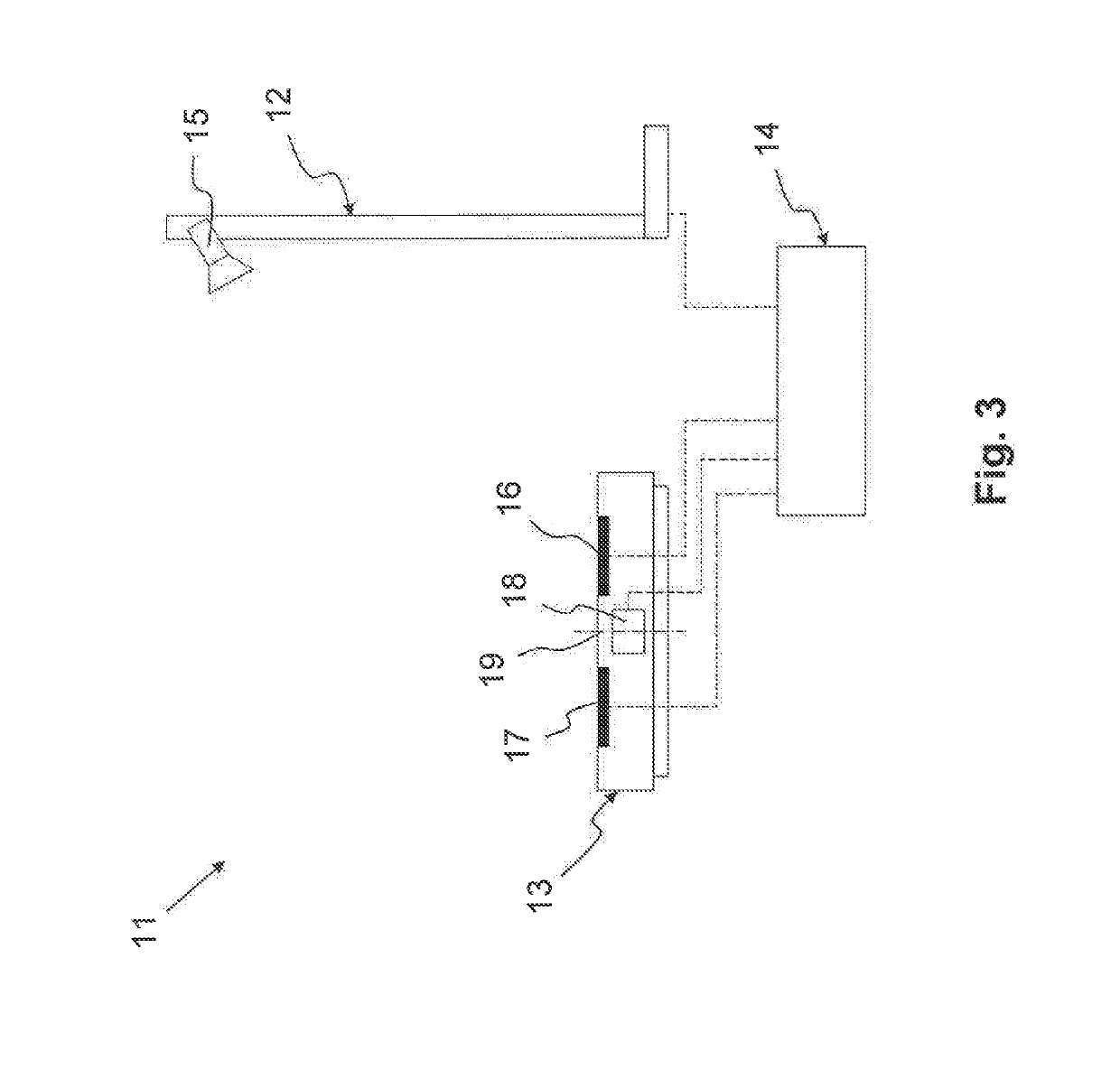Determination of Body Fat Content by Body-Volume-Distribution and Body-Impedance-Measurement
a body fat content and body volume measurement technology, applied in the field of 3d body scanners, can solve the problems of limited information, validity of the so-called “rope”, and the inability to accurately deduce the body fat of any particular individual from bmi, so as to improve performance at very fat or slim subjects, high accuracy, and low cost
- Summary
- Abstract
- Description
- Claims
- Application Information
AI Technical Summary
Benefits of technology
Problems solved by technology
Method used
Image
Examples
Embodiment Construction
[0059]The field of the disclosed invention deals with combining the two most popular and low cost methods, which are 3D body scanning and bio-electrical impedance analysis, while seeking to reduce the weaknesses of both methods.
[0060]As schematically shown in FIG. 3, 3D body scanners can be employed to derive body composition as e.g. body fat content from mass and volume and with object analysis considering the sex of the scanned body and using knowledge about specific mass of fat and non-fat tissue. Weakness in this method is the accuracy of volume determination by invisible body parts and the effects of motion during the scanning process. As schematically shown in FIG. 3, the 3D body scanner includes a scanner 12, a turntable 13, a processor 14, a camera 15, a first electrode 16, a second electrode 17 and a scale 18. The turntable 13 is rotatable in front of the scanner 12 about a turntable axis 19.
[0061]Bio-electrical impedance analysis (BIA) determines the inner composition of t...
PUM
 Login to View More
Login to View More Abstract
Description
Claims
Application Information
 Login to View More
Login to View More - R&D
- Intellectual Property
- Life Sciences
- Materials
- Tech Scout
- Unparalleled Data Quality
- Higher Quality Content
- 60% Fewer Hallucinations
Browse by: Latest US Patents, China's latest patents, Technical Efficacy Thesaurus, Application Domain, Technology Topic, Popular Technical Reports.
© 2025 PatSnap. All rights reserved.Legal|Privacy policy|Modern Slavery Act Transparency Statement|Sitemap|About US| Contact US: help@patsnap.com



